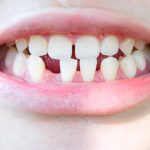Teeth Straightening 101: How Braces Efficiently Move Your Teeth
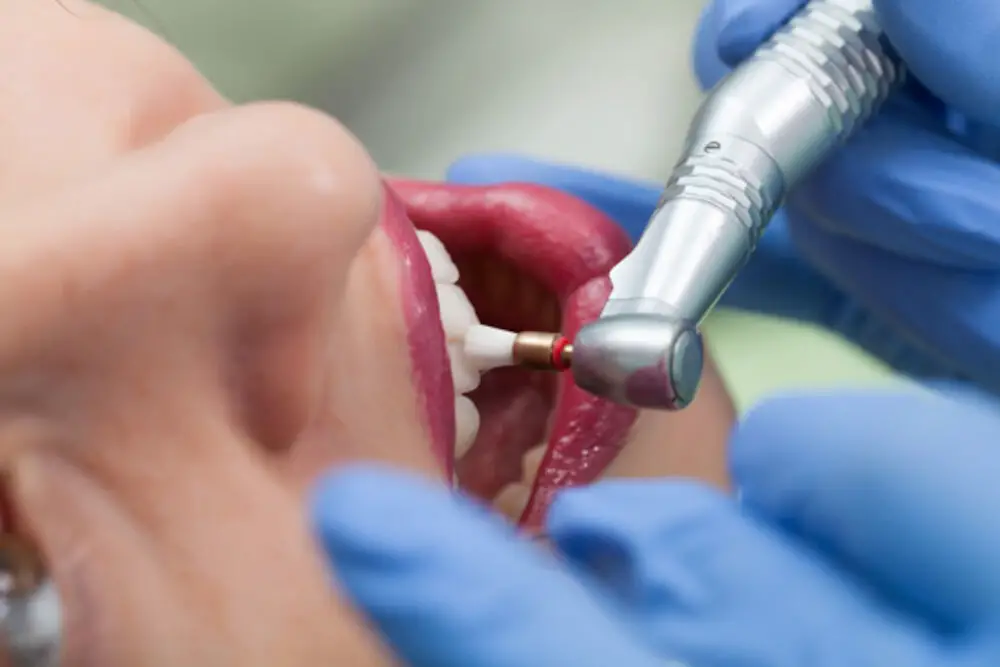
A straight and beautiful smile is a desired trait for many individuals, as it can significantly improve their confidence levels and overall appearance. However, not everyone is blessed with a perfectly aligned set of teeth. Fortunately, modern orthodontic treatments such as braces have made it possible for people to achieve straighter teeth and a more appealing smile. Braces are a reliable and efficient option that can correct issues such as overcrowding, overbite, underbite, and other misalignment problems. Braces use a combination of brackets and wires to straighten teeth gradually. These brackets and wires apply gentle pressure on the teeth, which move them into the desired position over time. The process may take several months or even a few years, depending on the severity of the misalignment. While braces may seem daunting and uncomfortable, they are an effective and safe way to achieve the desired results. In this article, we will delve into the details of how braces work to efficiently move your teeth and provide you with the smile you deserve.
Having straight teeth is not only important for aesthetic reasons but also for the overall health of your mouth. Straight teeth are easier to clean and maintain which can reduce the risk of gum disease and tooth decay. Misaligned teeth can also cause jaw pain, difficulty in chewing, and speech impediments. Not to mention, having a beautiful smile can boost your confidence and self-esteem, making you feel more comfortable in social situations. Braces are an effective solution for correcting crooked or misaligned teeth, and they can help you achieve a healthier and more attractive smile.
Braces are orthodontic devices that are designed to move teeth into better alignment, improving both the appearance and functionality of the teeth. They work by applying continuous pressure to the teeth, gradually shifting them into the desired position over time. Braces consist of brackets, which are attached to each tooth, and archwires, which are threaded through the brackets and tightened to apply pressure. The orthodontist may also use elastic bands or other appliances to help move the teeth. Regular adjustments are necessary to gradually increase the pressure and keep the teeth moving in the right direction. While the process can take several months to a few years, the end result is a beautiful, straight smile that can last a lifetime.
Proper teeth alignment is crucial not only for aesthetic reasons, but also for overall oral health. When teeth are misaligned, it can lead to various dental issues, such as difficulty in chewing and speaking, jaw pain, and increased risk of tooth decay and gum disease. Additionally, misaligned teeth can cause uneven wear and tear on the teeth, which can result in premature tooth loss. By receiving proper teeth alignment treatment, such as braces, individuals can improve their oral health and prevent potential dental problems down the road. Straighter teeth also provide a boost in self-confidence and improve the overall appearance of one’s smile. With a variety of teeth straightening options available, there’s never been a better time to invest in a healthier, more beautiful smile.
Types of Braces
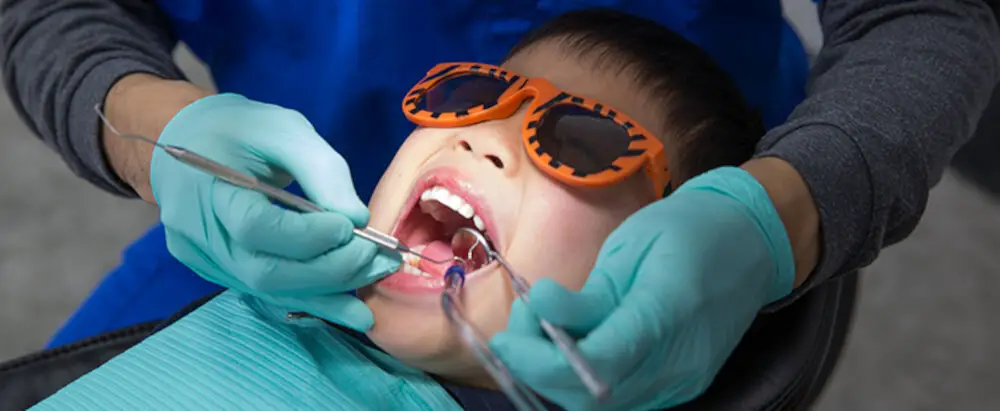
Braces are an effective way to straighten teeth and improve overall dental health. There are several types of braces available, each with its own advantages and disadvantages. The most common type of braces is traditional metal braces. These braces are made of stainless steel and consist of brackets, wires, and elastic bands. They are the most noticeable type of braces but are also the most effective in treating complex dental issues. They are also the most affordable option and are available in a range of colors, allowing patients to customize their look. Another type of braces is ceramic braces. These braces are similar to traditional braces but are made of clear or tooth-colored materials, making them less noticeable. They are a good option for patients who want to straighten their teeth without the look of traditional metal braces. However, ceramic braces are more fragile than traditional braces and can be more expensive. They also require more maintenance as they are prone to staining from foods and drinks. Overall, the type of braces a patient chooses will depend on their individual needs and preferences, as well as their budget. It is important to consult with an orthodontist to determine the best course of treatment for each patient.
Traditional metal braces have been around for many years and remain a popular choice for straightening teeth. They consist of metal brackets that are bonded to the teeth and connected by wires, which are adjusted over time to gradually move the teeth into the desired position. While some people may find metal braces to be unsightly or uncomfortable, they offer a highly effective solution for correcting a wide range of dental issues, such as crowding, spacing, and bite problems. Additionally, advancements in technology have made metal braces more comfortable and less noticeable than they used to be. For individuals who want a reliable and time-tested method for achieving a straighter smile, traditional metal braces are an excellent option to consider.
Ceramic braces are a popular choice for those who want a more discreet orthodontic treatment option. These braces are made of clear or tooth-colored materials that blend in with the natural color of your teeth, making them less noticeable than traditional metal braces. The brackets used in ceramic braces are typically larger than those used in metal braces, which can make them slightly more uncomfortable in the beginning. However, they are just as effective as metal braces when it comes to straightening teeth. Ceramic braces are a great option for those who want to correct their smile without drawing too much attention to their orthodontic treatment.
Lingual braces are a type of orthodontic treatment that is gaining popularity among those who want to straighten their teeth discreetly. Unlike traditional braces that are placed on the front of the teeth, lingual braces are placed on the back of the teeth, making them virtually invisible. This type of treatment is ideal for adults who want to straighten their teeth but are concerned about the appearance of traditional braces. Lingual braces use the same technology as traditional braces, with brackets and wires that apply gentle pressure to move the teeth into their desired position. Although they can take some getting used to, lingual braces are an effective way to achieve a straighter, more beautiful smile without anyone knowing you are undergoing orthodontic treatment.
Invisalign is a modern alternative to traditional metal braces that uses clear plastic aligners to gradually shift teeth into their desired position. The aligners are customized for each patient using 3D imaging technology, ensuring a comfortable and precise fit. Invisalign is a popular option for adults and teens who want to straighten their teeth without the noticeable appearance of traditional braces. The clear aligners are removable, making it easier to maintain good oral hygiene and enjoy all of your favorite foods during treatment. Invisalign treatment typically takes about 12-18 months, depending on the severity of the case, and requires regular check-ups with an orthodontist to ensure progress is being made.
How Braces Work
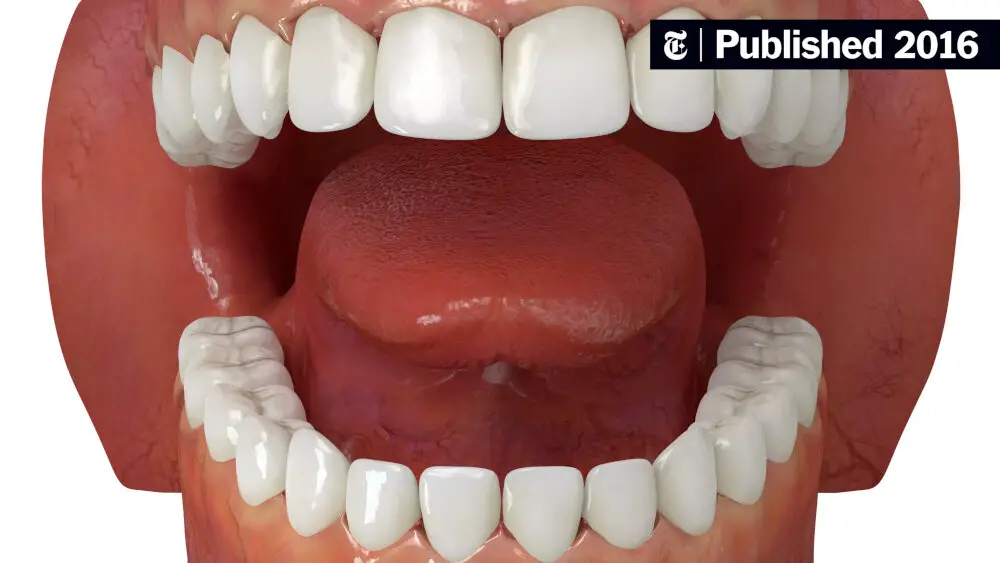
Braces are a popular orthodontic treatment that helps people achieve a straighter smile. But how exactly do they work? Braces apply a constant, gentle pressure to the teeth, which stimulates bone remodeling. This means that the bone changes shape in response to the pressure, allowing the teeth to gradually shift into the desired position. The brackets, wires, and rubber bands work together to provide this pressure, with different types of braces exerting different amounts of force. Over time, the teeth move into their new positions, giving you the beautiful smile you’ve always wanted. The effectiveness of braces depends on several factors, including the severity of the orthodontic problem and the patient’s age. In general, the younger the patient, the more quickly the teeth can be moved. However, adults can still benefit from braces, although treatment may take longer. It’s important to follow your orthodontist’s instructions for caring for your braces, as proper maintenance can help ensure that your treatment is as efficient as possible. With the right care and attention, braces can help you achieve the straight, healthy smile you’ve always wanted.
Wires and brackets play a crucial role in the teeth straightening process. Brackets are small, square-shaped metal pieces that are attached to each tooth. Wires are then threaded through the brackets and secured in place using small rubber bands. These components work together to apply pressure to the teeth, gradually shifting them into their desired positions. The wires are adjusted periodically by an orthodontist to ensure the teeth continue to move in the right direction. The brackets also serve as anchors for other orthodontic appliances, such as elastic bands, that may be used to correct bite issues. Overall, wires and brackets are essential components of braces that work together to efficiently move teeth into their proper alignment.
The process of applying braces involves several steps. First, the orthodontist will examine the patient’s teeth and take x-rays to determine the best course of action. Next, the orthodontist will clean and dry the teeth before applying brackets to each tooth with a special adhesive. The brackets are connected with wires that are tightened periodically to move the teeth into the desired position. Patients may experience some discomfort during the tightening process, but this is temporary. The full treatment time for braces can vary depending on the severity of the misalignment, but the end result is a beautifully straight smile. It’s important to follow the orthodontist’s instructions for cleaning and maintaining braces to ensure the best outcome.
The adjustments and tightening of braces are crucial to the teeth straightening process. As the braces apply pressure to the teeth, they start shifting into the desired position. However, the teeth may not always move exactly as planned. That’s why regular appointments are necessary to assess the progress and make necessary adjustments. The orthodontist may need to tighten the wires or change the rubber bands to ensure that the teeth are moving in the right direction. Neglecting these appointments or not following the instructions of the orthodontist can lead to longer treatment time, discomfort, and even damage to the teeth. Therefore, it’s essential to be diligent with appointments and follow the orthodontist’s instructions to achieve the best possible results.
Timeline of Teeth Straightening
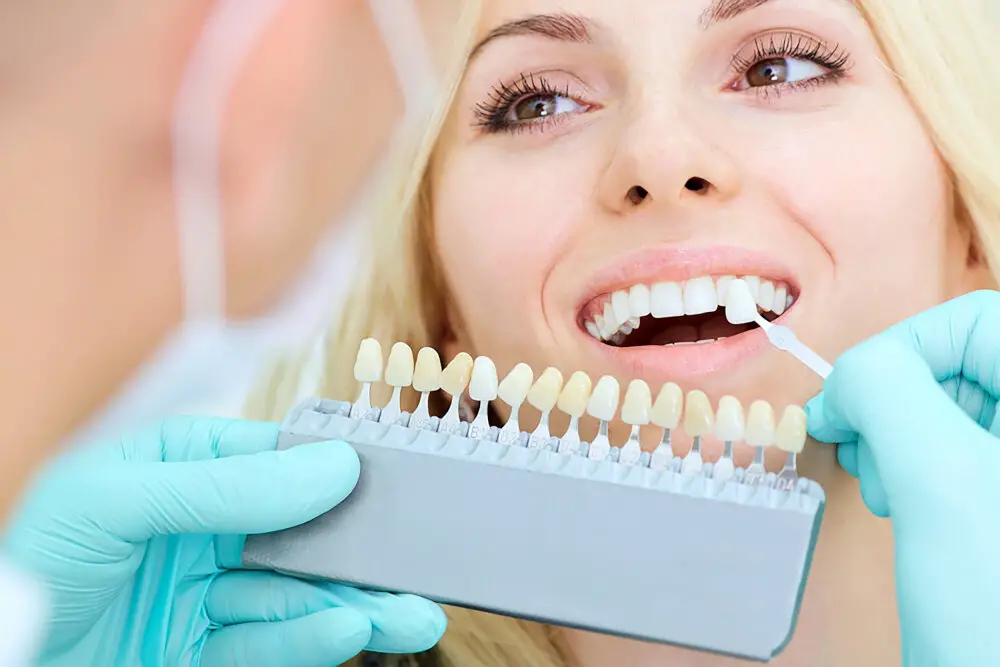
The timeline of teeth straightening is a fascinating journey that dates back thousands of years. The ancient Egyptians were the first to use metal wires to straighten their teeth, using catgut to tie the wires in place. In the 18th century, Pierre Fauchard, considered the father of modern dentistry, introduced the first orthodontic appliance made of gold wire. However, it wasn’t until the 20th century that orthodontics became a widely accepted practice. Edward Angle, known as the \father of modern orthodontics,\ revolutionized the field by developing the first classification system for malocclusions and introducing the use of brackets and bands. In the 1970s, the introduction of dental adhesives made it possible to attach brackets directly to teeth, eliminating the need for bands. This led to the development of lingual braces, which are placed on the back of the teeth and are virtually invisible. In the 1990s, clear aligners were introduced, which are custom-made plastic trays that gradually move teeth into the desired position. Today, there are many options for teeth straightening, including traditional metal braces, ceramic braces, lingual braces, clear aligners, and self-ligating braces. With advances in technology, orthodontic treatment has become more comfortable and efficient, making it easier than ever to achieve a beautiful, healthy smile.
The average timeline for braces can vary depending on the severity of the misalignment of the teeth. On average, most people wear braces for 1-3 years. During this time, the orthodontist will make periodic adjustments to the braces to gradually shift the teeth into their desired position. It is important to follow all instructions provided by the orthodontist, such as avoiding certain foods and wearing rubber bands, to ensure the best possible outcome. Once the braces are removed, a retainer may be recommended to maintain the new position of the teeth. Overall, the process of wearing braces can require patience, but the end result of a healthy and beautiful smile is well worth it.
The timeline for teeth straightening with braces can be affected by various factors. Firstly, the severity of the misalignment of teeth can determine how long the treatment will take. The more complex the issue, the longer the treatment duration may be. Secondly, the age of the patient can also influence the timeline as younger patients may have more malleable teeth, making the process quicker. Additionally, compliance with dental appointments and proper care of the braces can also impact the timeline. Failure to attend appointments or maintain good oral hygiene can lead to setbacks and prolong the treatment. Lastly, the type of braces used can also affect the timeline. More advanced options such as Invisalign may offer a shorter treatment time compared to traditional metal braces.
If you are considering teeth straightening with braces, there are a few things you can expect during the process. First, your orthodontist will conduct a thorough examination of your teeth and jaw to determine the best course of treatment. Once your braces are placed, you may experience some discomfort as your teeth begin to shift into their new positions. It’s normal to feel some soreness or pressure for a few days after each adjustment appointment. You’ll also need to be careful about what you eat, as certain foods can damage your braces or get stuck in the wires and brackets. However, with proper care and maintenance, your braces will efficiently move your teeth into the desired alignment, resulting in a beautiful, healthy smile.
Maintaining Results

Once your braces are removed, you will be excited to see your straight teeth and smile in the mirror. However, it is important to remember that maintaining your results is just as important as achieving them. Your orthodontist will provide you with specific instructions on how to care for your teeth and retainers after your braces are removed. Following these instructions is crucial to ensure that your teeth do not shift back to their previous positions. One of the most important things you can do to maintain your straight teeth is to wear your retainer as instructed by your orthodontist. Retainers are custom-made devices that are designed to hold your teeth in their new positions. They are typically worn for a certain amount of time each day or night, depending on your specific needs. Failing to wear your retainer as instructed can cause your teeth to shift back to their previous positions, undoing all of the hard work that went into straightening them. Therefore, it is important to take your retainer wear seriously and follow your orthodontist’s instructions closely.
After months or even years of wearing braces, it is essential to wear retainers as they help maintain the results of the orthodontic treatment. Retainers keep the teeth in their new positions and prevent them from shifting back to their original spots. These appliances can be either fixed or removable and are typically worn for an extended period, often at night. Failing to wear retainers can cause the teeth to move back to their original positions, reversing the progress achieved with braces. Therefore, wearing retainers is a crucial step in achieving a beautiful and healthy smile.
Retainers are orthodontic devices used to maintain teeth in their newly straightened position after braces have been removed. There are two main types of retainers: removable and fixed. Removable retainers are made of clear plastic and can be easily taken out of the mouth for eating, brushing, and flossing. There are different types of removable retainers, including Hawley retainers, which have a combination of wires and acrylic to hold the teeth in place, and clear aligner retainers, which are similar to Invisalign trays. Fixed retainers, on the other hand, are bonded to the back of the teeth and cannot be removed by the patient. These retainers are made of a thin wire that is bonded to the teeth using dental cement. Both types of retainers are effective in keeping teeth in their new positions, but your orthodontist will recommend the best type for your individual needs.
After you have completed your braces treatment, it is important to maintain your straight teeth. To ensure that your teeth remain straight, you should wear your retainers as instructed by your orthodontist. It is also important to avoid habits that could cause crooked teeth, such as biting your nails or chewing on pens. Maintaining good oral hygiene is also crucial, as straight teeth are more susceptible to cavities and other dental problems. Regular visits to the dentist and orthodontist can help ensure that any issues are addressed promptly. Additionally, it is recommended to wear a mouthguard during contact sports to protect your teeth from damage. By following these tips, you can help ensure that your teeth remain straight and healthy after completing your braces treatment.
Teeth straightening is an essential aspect of maintaining good oral health and a beautiful smile. Crooked teeth can lead to various dental problems such as gum disease, tooth decay, and even loss of teeth. Additionally, misaligned teeth can cause speech difficulties, difficulty chewing, and affect the overall appearance of a person’s face. Braces are an effective method of straightening teeth, and they work by applying gentle pressure on the teeth, gradually moving them into the desired position. Braces not only improve dental health but also boost self-esteem and confidence by providing a beautiful, straight smile. Overall, teeth straightening through braces is an investment in both oral health and aesthetic appeal that can have long-term benefits.
In conclusion, braces have been proven to be an effective and efficient method for straightening teeth. The use of brackets, wires, and elastics work together to apply gentle pressure to shift teeth into the desired position. While the process may take several months or even years, the end result is a beautiful and healthy smile. It’s important to note that proper oral hygiene is essential during the treatment process to avoid any potential complications. Overall, braces are a worthwhile investment for anyone looking to improve their dental health and enhance their appearance.
If you’re considering orthodontic treatment, know that it’s never too late to achieve a beautiful, healthy smile. Orthodontic treatment can provide numerous benefits beyond just improving the aesthetic appearance of your teeth. Straighter teeth can also improve your oral health by making it easier to clean your teeth and reducing your risk of tooth decay, gum disease, and other oral health issues. Additionally, orthodontic treatment can improve your bite, alleviate jaw pain and headaches, and boost your self-confidence. While the process may require some patience and dedication, the end result of a healthy, straight smile is well worth the effort. So, if you’re ready to take the first step towards a healthier and more confident you, seek out an orthodontist and start your journey towards a beautiful smile today.
Conclusion

In conclusion, braces are a highly effective way to straighten teeth and fix various orthodontic issues. The intricate design and components of braces work together to gradually apply the necessary pressure and force on teeth to shift them into their proper positions. While they may require some adjustments and discomfort during the treatment process, the end result of a beautiful and healthy smile is well worth it. Additionally, the advancements in orthodontic technology have made braces more comfortable and aesthetically pleasing than ever before. Overall, if you are considering teeth straightening, braces remain a top option for efficiently moving your teeth into the desired position.


